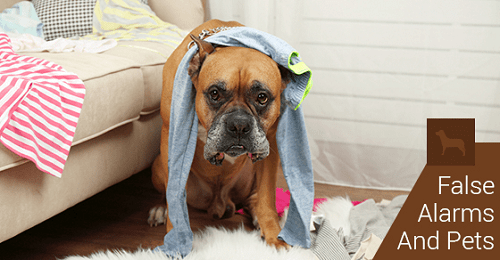
8.16.19 – omaha.com –
A home security system can keep your family safe, but for households with pets and children, installing one might seem like a headache worth avoiding. Whether it’s your child setting off the fire alarm while making toast or your cat knocking over a vase and triggering a motion sensor, false alarms can disrupt your day and cause frustration.
There is good news. Today’s smart home security systems offer tools and gadgets that can help prevent false alarms and keep your home safe no matter how unruly or forgetful the occupants are.
Key tags for kids
The easiest method is a key tag. Affix one to your child’s backpack — when they come home, it connects to the alarm system and automatically shuts off. Or, install your security system’s app on your child’s smartphone so they can arm and disarm the system using their device.
Set a schedule
Another option to avoid false alarms is to set a schedule based on your family’s routines. You can create rules in your alarm system’s app to automatically arm and disarm at specific times during the day. A sample routine might be:
- Set your system to deactivate at 6 a.m. when you wake up.
- Arm it at 8 a.m. when everyone has left for the day.
- Disarm just before everyone arrives home.
- Arm again at 10 p.m. before bedtime.
Prep for pets
- Install a smart alarm system. These have interactive features, like remote arm/disarm and text and email notifications that you can access through an app when you’re away from home. These features allow you to easily check in and cancel the alarm if there isn’t an issue, keeping the authorities from getting dispatched in error due to a pesky pet. A WiFi-enabled camera is also a good addition to your security system. Place it where your pet hangs out the most, so you can quickly check to see if there is a real emergency or if Fido just got a little frisky
- Ditch the motion sensors. Pet-immune motion sensors generally apply to pets under a certain weight, primarily because they are low enough to the ground not to be detected. If you have a cat that likes to leap around, these sensors will still pick it up. Instead, consider investing in more contact sensors around your doors and windows and glass break sensors. If every entry point has one, there’s less need for motion sensors. Alternatively, confine your pets to rooms without motion sensors when you are away.
With children and pets in your home, an alarm system is essential. Don’t let the perceived difficulties of using a security system prevent you from protecting what’s most precious to you. Today’s smart alarm systems offer solutions to these problems, so you can keep an eye on your home even when you’re not there.
***
Jennifer Pattison Tuohy is a freelance writer and contributor for Xfinity Home. She writes about the smart home, mobile phone technology, consumer tech, small businesses, and green living for a variety of newspapers, magazines, and online publications.
